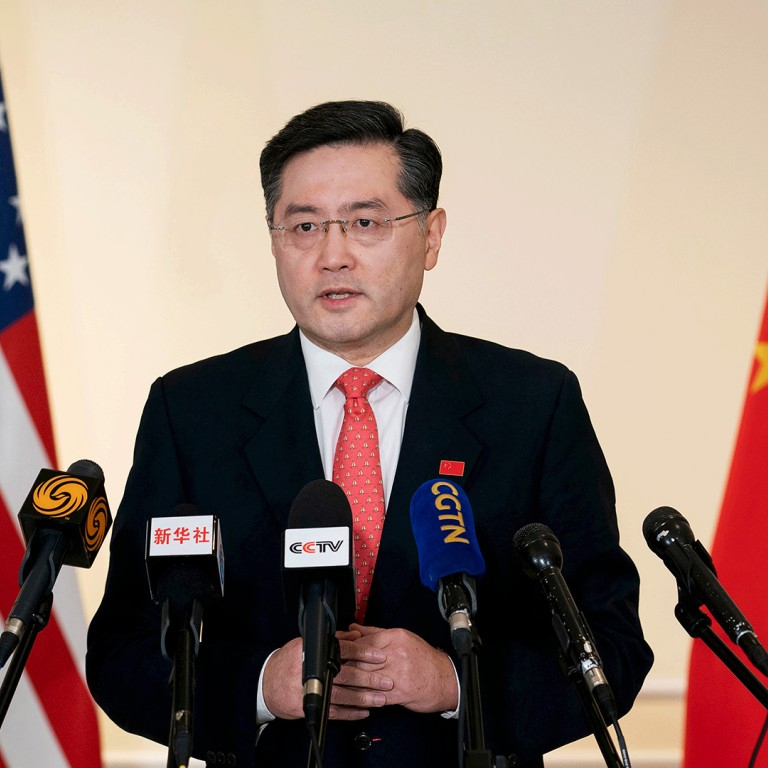China’s recent outcry over the alleged breach of ‘Gentleman’s Agreement’ with the Philippines reveals a profound irony, given the history of its coercion and deceit
 KRC TIMES Desk
KRC TIMES Desk

Bhopinder Singh
China’s recent outcry over the alleged breach of ‘Gentleman’s Agreement’ with the Philippines reveals a profound irony, given the history of its coercion and deceit.
There is a huge amount of insincerity and gall involved in the Chinese complaint that the Philippines had torn up the bilateral ‘Gentleman’s Agreement,’ between Beijing and Manila. While the term ‘Gentleman’s Agreement’ has an implicit assumption of ‘trust’ as a fundamental tenet besting a relationship, which may otherwise not be legally binding — to even imagine that there has been any element of ‘trust’ between these two sparing countries, is to put oneself up to ridicule.
Much of the tensions in the countries around the South China Seas originates from an expansionist instinct in China that seeks to coerce, intimidate and dominate the region with creative, wholly unique and untenable concepts like the ‘nine dash line’ (called out by the International Court of Justice, Hague, as illegal). But it is not just the Philippines but also other regional countries like Indonesia, Malaysia, Vietnam, Taiwan, Brunei etc., that are up in arms over Chinese belligerence.
Recent events have seen optics like the Philippines charging China in the International Court of Justice, Hague (and winning the plea), dangerous military exercises to assert competitive territorial counterclaims, ramming and shooting with high-pressure water cannons at Filipino boats, disruption to freedom of navigation, denying access etc., hardly the backdrop to assume the word ‘trust’ between two constantly slug-fisting nations.
But the make-believe posturing and incredulously ‘cry wolf’ terms like ‘Gentleman’s Agreement’ are an age-old Chinese norm, whenever anyone has stood up to expose its bullying and relentless expansionism. The Chinese through their conduct have unilaterally made a mockery of the UN Convention on the Law of the Sea.
The Chinese have further upped the ante by dredging up sand to create artificial landmass e.g., around the restive Spratly Islands. This is enough to station a Military base replete with fighter planes and missiles and even anchor its fleet of so-called “unsinkable aircraft carriers”. All this has been done with sheer impunity and disregard towards any neighbouring countries’ territorial claims, sense of security, or socioeconomic concerns. Duplicitousness and attempting to checkmate (by force or lure) any emerging force that could challenge the Chinese juggernaut is met with its patent falsehoods, sneaky ‘salami tactic’ encroachment, or even brazen show of force.
In the late 70s, the Chinese were more concerned about the Soviet Union, than with the United States of America. Beijing had counterintuitively started engaging with Washington DC to align it towards its side as it went about preparing to attack Vietnam. Chinese Vice-Premier Deng Xiaoping on a trip to the United States had told US President Jimmy Carter, “The child is getting naughty, it is time he got spanked”.
Soon thereafter, China attacked Vietnam in a war that is recalled in Vietnam as Chien tranh chong bành truoing Trung Hoa (War against Chinese expansionism)! The physical-material superiority in favour of the Chinese PLA notwithstanding, most independent military historians acknowledge the bloody nose inflicted by the plucky, war-experienced and pugnacious Vietnamese forces that led to a rupture between China and Vietnam, that still lingers subliminally.
Even earlier in the 50’s, the Chinese laid the trap for Nehru’s complacency when Chinese Premier Zhou Enlai refused to contest Nehru’s rightful insistence on Aksai Chin by accepting that China had no claim on it. But Zhou would renege and contradict his earlier position by later claiming that Aksai Chin was already under the Chinese – they had surreptitiously built a road, while still playing naïve and ingenuous, all along.
Like all bilateral agreements that the Chinese are always willing to relegate to the bins, the Five Principles of Peaceful Coexistence was put to the same fate. In yet another act that would soon become a standard Chinese practice over the years, the Chinese cartographical interpretation was revised with newly usurped territories and claims.
This template of dubious expansionism led to the 1962 Indo-China War and ensured unsettled status in the region with the Chinese ‘updating’ their official maps with new territories and new names. That same principle has been applied to sovereign maritime issues in the South China Seas and the ongoing tussle with the Philippines has its roots in the history of China’s insatiable expansionism and unbridled ambition to assert its hegemony.
Propaganda in the highly controlled media of China has been elevated to a fine art. Filipino Defence Secretary was quick to rebut the same by clarifying that he was, “not aware of, nor is it a party to, any internal agreement with China” and that his department had, “not had any contact with any Chinese Government officials since last year”. The Chinese have been deft with wordsmithing in order to lay the blame for ongoing tensions in the Philippines by first invoking an alleged ‘promise’, which then became a ‘Gentleman’s Agreement’ and have most recently morphed into a ‘new model’ and finally ‘internal understanding’.
Gen Jonathan Malaya, of the Philippines National Security Council, put it bluntly, “The propaganda masters are clearly working overtime in Beijing to sow discord and division in our country”. But unfortunately for the Chinese, there are fewer takers for their position by the day and there never was, or is, anything ‘Gentlemanly’ about Chinese diplomacy, for decades.
Advertisement | 5E for Success






